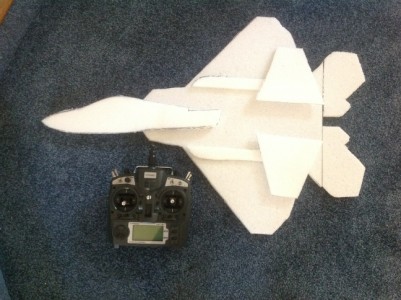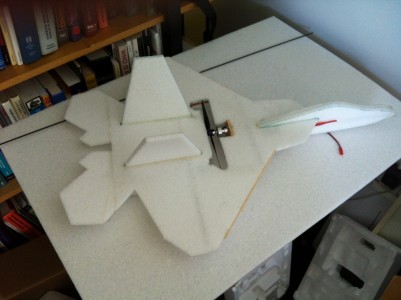I have previously mentioned Jim Lahey’s no-knead bread (posts here and here and here. I’ve continued to make this at least once a week since those early days of experimentation. I thought I might include a few notes about how I’m makind and refining the process that I use.
My early loaves kind of reminded me of the experience I had when first taking drawing classes. When I first started drawing classes, my improvement was immediate and dramatic. Childish squiggles gave way to portraits which were at least recognizable. But after that initial rush, you become more discerning, more critical of your own work. It’s that way for this bread as well. Initially, it’s amazingly good. But then, you begin to notice a few things which are perhaps not as good as you imagined. After a few weeks of that, I decided to try to be somewhat more methodical in trying to figure out what I was doing right or wrong, which approaches yielded better results, or worse results, and try to refine the basic recipe into something that is repeatable.
The recipe is so simple (flour, salt, yeast and water) that simple experimentation wasn’t difficult. The most obvious thing to vary was the ratio of water to flour. Jim Lahey’s book suggests a 2:1 ratio by volume (three cups of flour to one and a half of water) but when I tried to do that, I didn’t get repeatable results. Sometimes, the dough would appear to be fairly dry and it was difficult to get the flour to integrate, other times, the dough would be wet, and the second “rise” would look more like a “relax”: the dough would spread out rather than rise up. “Real” bakers will tell you that you need to weigh your ingredients to get an accurate measure, so I went ahead and bought a simple mechanical food scale that I could use.
Okay, but what amounts to use? Three cups of flour doesn’t really have a consistent weight, but it probably weighs a little over 4.5 ounces per cup. That would make for 13.5 ounces for three cups. Water is easier: a cup and a half is 12 ounces. So, I started experimenting. To make things easy, I decided to keep the weight of flour constant, and only vary the amount of water to
try to find the appropriate hydration ratio. My early experiments were all with dry yeast (1/4 tsp) and one teaspoon of salt.
I was a bit surprised. I’m using slightly more flour than the recipe would normally recommend, but it turns out that 12 ounces of water was ample to hydrate the flour. In fact, it appeared that the final dough was too wet: it spread out a lot during the second rise, and the final loaf was quite flat. A few more trials over the next couple of weeks (I can only eat so much bread) revealed that decreasing the water to eleven ounces gave a nicer result.
So, here’s my first rule of thumb: weigh your ingredients, sixteen ounces of flour, eleven ounces of water seems good for basic bread.
Secondly, I was concerned that my oven wasn’t coming up to temperature. I purchased an oven thermometer, and verified my oven was having a difficult time getting even to 450 degrees. Even with 30 minutes of pre-heating, it seems to reach a maximum temperature of 430 degrees or so. By 45 minutes, it seems to be more or less at 450 degrees. If I do a long preheat, I end up with nicer deeper color on the crusts, and the bread seems nicer overall.
Second rule of thumb: don’t rush your preheat, especially if your oven might have a hard time getting that hot.
Third, the depth and crispiness of the crust seems to be dependent on the humidity in the Dutch oven. Some have suggested spraying the bread with water as it goes into the oven, and I’ve found that to be helpful. When I take the time to spritz the loaf, the loaf seems to expand a bit better, and the resulting crust forms more nicely (more tender). But when you remove the lid during cooking, it also appears to be helpful to let the oven vent for thirty seconds or so: if you are too quick, the humidity in the oven can remain high, and when you pull the loaf out at the end, you may still feel some wet steam. That prevents the “singing” crackling crust that you want.
Third rule: spritz it with water when it goes in, when you remove the lid for the last fifteen minutes, vent the oven pretty well.
Fourth rule: let the bread cool before you eat it. My wife loves it when it’s hot, but frankly, some of the starches inside still seem fairly gelatinous to me when you cut into it, and they need some time for the steam to redistribute water inside the loafs. Just like resting a steak, the bread will be better when it’s rested for a while. After an hour or two, I put the whole loaves into paper bags and store them in our bread box until they are ready to eat. I don’t recommend plastic for whole loaves, especially if the loaves are not completely cool: the residual steam condenses inside the plastic, and wrecks the crust. Once you’ve cut into the loaf, plastic might be useful to store the bread to keep it from drying out.
I’ve just begun experimenting with similar ratios for using sourdough. My first tests have been with the same amounts of flour and salt. Previously I would use one and a half cups of water and 1/4 cup of starter, but again, I found that to be a fairly wet dough, creating a fairly flat loaf. My current experiments have centered around the ratio that I found for my yeast loaves: I take 1/4 cup of starter, and add enough water to make eleven ounces. I’ve made this twice, and the resulting loaves are nice and round, but perhaps a bit dense, with fairly even but small bubbles inside the loaf. I think I’ll try to add a very small amount of additional water (11.5 ounces total weight) to compensate for the small amount of additional flour that is in the starter. More experimentation is clearly called for.
I also have begun to wonder if I’m “overrising” some of my dough. Leaving this dough for 24 hours may be too long. I like to make the dough when I get home after work, and then bake it the next day, meaning a full day for it to rise. I suspect that (especially for the bread made with commercial yeast) it may be better to cut that down to 18 hours or so (make the dough just before going to bed, but bake it when I get home from work). I’ll be experimenting some more over the next few weeks.
Anybody else having fun with this recipe? Any tips you might want to give this budding baker?

